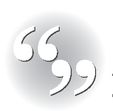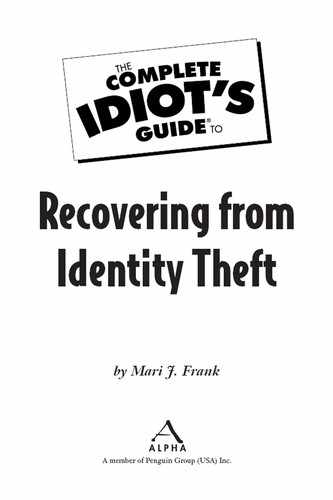Check and Electronic Fraud
When an identity thief has invaded your bank account through check or fraudulent electronic transfer, you’ll see unexplained charges on your bank statements. Your bank statements may have stopped arriving if the fraudster has changed the address on the account. Most likely the fraudster will work to quickly drain your account. So check your online statement at least twice a week to catch the thief. Even better, set up bank e-mail alerts to see any fraud transfers immediately.
Check Your Checks
Check fraud is rampant. Fraudsters can steal your checks and use them; take checks you’ve written and wash off the name, replacing it with ones they are using; simply get your bank to change your address to theirs; work with an unscrupulous insider at the bank to add their name to your account; open a new account under your name or just Social Security number; or simply create counterfeit checks with your account number but someone else’s name by using software purchased at a retail store. Suddenly your account is out of money or merchants are refusing to take your checks.
Check fraud can be a difficult problem to fix for a number of reasons, including the following:
♦ There is no universal way for merchants to verify if the check is legitimate, even if they can see if they have had a problem with your account before.
♦ No federal law limits how much you can lose if your checking account is depleted by fraudulent checks and you don’t act immediately.
♦ Most states have laws granting you rights, including holding banks responsible for fraudulent transactions, but you must research them, as Chapter 1 describes.
♦ To deal with bad checks, you may have to deal with your bank, the bank the fraudster used, and any merchant that accepted a fraudulent check.
♦ The crook might be sending out bogus checks for an account you already closed, which won’t matter to the merchants who contact you for payment.
♦ The impostor may create checks that use your account number but not your name.
♦ The thief may have used your name to open accounts in banks unknown to you, perhaps in another state.
If you think someone has been accessing your checking or bank accounts through stolen, newly created, or forged checks, the first step is to read Chapter 3 and file a law-enforcement identity-theft report as well as prepare an identity-theft affidavit.

Identity Crisis
Check fraud can escalate to lawsuits and even criminal prosecution if the amounts are large enough, and if you don’t immediately take steps to protect yourself. Run a background check as described in Chapter 3 (or go to www.privacyrights.org/background-checks-and-workplace). If it indicates criminal activity, check Chapter 15. If there is a civil suit, see Chapter 16.
Notify the Bank
It is critical that you examine your bank statements. Most banks will accept claims of account fraud for only 30 or 60 days after the date of the statement. If you don’t inform the bank immediately, you may never get your money returned. Once you know you’re the victim of identity theft, check your bank statements at least once a week if you have online banking. Contact the bank by phone immediately and then follow up in writing, return receipt requested. Include the following:
♦ A statement that you are the victim of identity theft with a brief list of the facts as you know them.
♦ Your bank-account number.
♦ The check numbers and respective amounts that are fraudulent and a statement that they are fraudulent. (You may print a copy of your online statement and circle the fraudulent charges.)
♦ Copies of your FTC identity-fraud affidavit and your law-enforcement identity-theft report.
♦ Copies of a government-issued ID and a utility bill showing your home address.
♦ A demand that the bank immediately close the account (if the bank did not do that when you were talking to a representative), as well as any connected or linked accounts and any associated credit cards or debit cards.
♦ A demand that a new account be opened with a security code and an ATM card with a new pin, and that funds withdrawn by the fraud be returned and deposited in the newly created account, and that all other accounts of yours receive a security code.
♦ A demand that the bank put a stop payment on any checks that may have been stolen.
♦ A request for the original check if available, or for a substitute copy if the original has been destroyed as allowed under Check 21. 

Information = Power
A federal program called Check 21 allows banks to transmit electronic images of a deposited check to get paid, rather than shipping the actual paper version. You get certain legal rights, like being able to have up to $2,500 in funds returned to your account within 10 days if a check is cashed in error. To exercise those rights, you’ll need the original check or a substitute copy from the bank. The single-sheet copies of multiple checks that some banks send in your monthly bank statement do not give you the same rights. You must have a copy of both the front and the back of the check. If you have online banking and can print a copy of the front and back of the check image, that should serve as a substitute check.
♦ A request that the bank ask any bank that received a fraudulent check as a deposit to keep the original rather than destroying it.
♦ A request for the name and contact information of the fraud investigator who will be handling your case along with a case number, if any.
♦ A statement that your current address and phone numbers, which you have included, are the only ones to use to correspond with you.
♦ A request for written confirmation from the bank that all this has been done and that the account has been marked “closed due to theft and not to be reopened.”
♦ A request that your bank notify all check-verification companies of the fraud.
Once you’ve done this, be sure to shred any blank checks that you still have from the account as well as any ATM or debit card. You will need to open a new bank account and get a new ATM, not a debit card (for reasons I explain later in the chapter). Add a password other than your mother’s maiden name so no one can change any of the information, including name and address.

Legal Lingo
A check-verification company collects information about returned checks and reports that data to its merchant customers. The reports that check-verification companies issue are considered specialty consumer reports under FCRA, so you have the right to review, dispute, and correct errors and fraud. You have the same obligations to provide written request for deletion of fraud with proof, which would include your FTC affidavit, a police report, and a verification of the fraud from the bank that rejected the check.
Notify the Check-Verification Companies
You need to report the fraudulent use of your checks to the various check-verification companies and ask them to place a fraud alert on your name and account number. Create a password to be used for any future communications. Place a “security freeze” on your consumer report, which will prohibit a check-verification company from releasing any information in your consumer file without your express authorization. If you go to open an account, the bank will receive a message indicating that you have blocked your information and you will need to authorize the inquiry. Here are the major check-verification companies and their telephone numbers:
♦ ChexSystems: 1-800-428-9623 www.consumerdebt.com (for identity-theft dispute form)
♦ Certegy/CPRS: 1-800-437-5120
♦ SCAN: 1-800-262-7771
♦ TeleCheck: 1-800-710-9898
You will want to request the free copy of your consumer file available under the FCRA. The reports will tell you if someone has been writing bad checks in your name. You will also see the names of merchants who subscribe to the service that received bad checks. Using the same type of letter as you would send in Chapter 5, dispute the fraudulent transactions and ask that they be removed.
Notify the Merchants
If someone has stolen your identity and committed check fraud, it was to get merchandise or services from merchants without any intent to pay. So the chances are good that there are companies thinking that you owe them money.
After you’ve received the reports from the check-verification companies, you’ll have the names of at least some of the merchants that have received bad checks. Not all businesses subscribe to check-verification services, but the substitute copies of the bad checks from your bank will show who received them.
Call the billing or fraud department of the merchant that received the fraudulent checks. Ask which check-verification company the merchant uses so you may notify it, place a fraud alert, and get a free report. Write the usual follow-up letter informing it about the details of the check fraud, including whether the checks were forged or the criminal got a fraudulent account using your Social Security number. Make a copy of the entire package you sent to the bank and send it, return receipt requested, to the merchant as well so it can correct its records.
It’s important to let the merchant know of the situation to keep it from continuing to report the bad checks to other check-verification companies, forcing you to spend more time and energy repeating the steps above.
..................Content has been hidden....................
You can't read the all page of ebook, please click here login for view all page.
